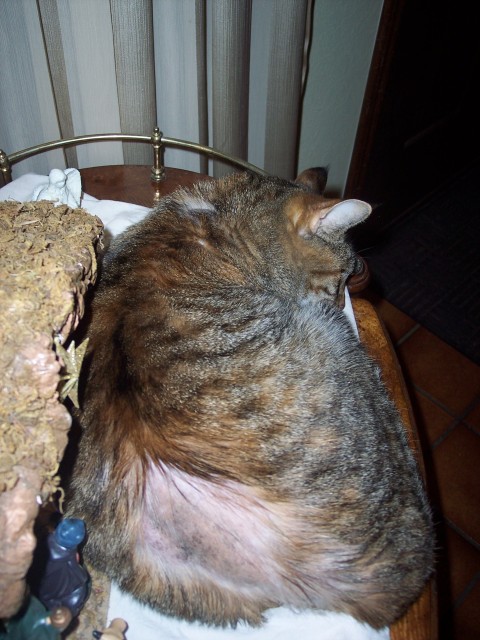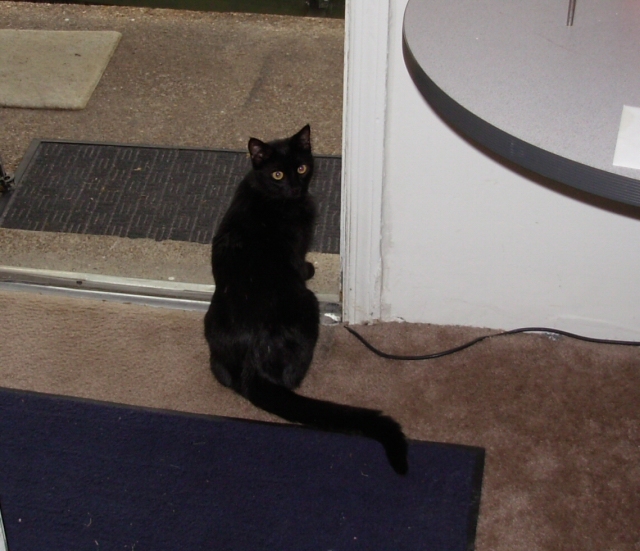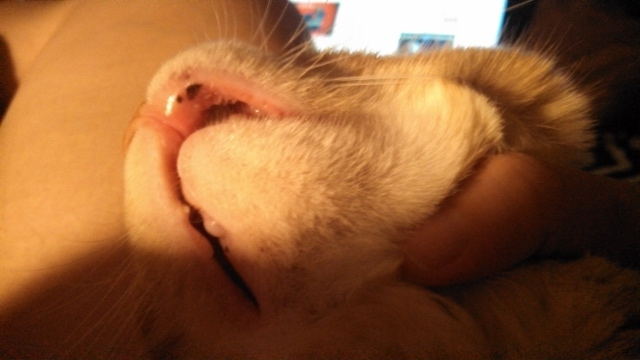QuestionI have 2 minature daschsunds, a male and female.
my female is in heat and the male has a hard time accomplishing his mission..Do you have any advice to complete the task??? Thanks.
AnswerHi Barbara!
You can't count on Cupid's arrow when planning the perfect pet romance. While experienced dogs and cats rarely balk in the boudoir, it's not always so easy for beginners.
A lot of times inexperienced pets won't know what to do.
Performance anxiety can be a problem, particularly for males. Also a problem for males is balance -- or the lack of it. And in some cases the chemistry simply isn't there. But with planning and patience, you can help your pet make a successful love connection. Here's what experts recommend.
For Dogs and Cats
Start him young. Breeding a five-year-old dog or cat for the first time often results in difficulties. He may have a low libido or sperm count. Or he may not know what he's supposed to do.
If you're going to use him as a stud, the first time should be before he's over 18 months old.
It's also a good idea to have a vet examine your pet to make sure he (or she) doesn't have a sexually transmittable disease or unwanted genetic conditions -- like hip dysplasia or certain eye diseases -- that might be passed on to offspring. Your vet can also recommend the best time for breeding.
Find an experienced partner. Female dogs and cats generally have less trouble mating than males do, so matching a male with a more experienced partner will make his job that much easier.
Go to his place. Male dogs and cats occasionally get nervous when they travel to another dog's turf. Take the female to the male, because males perform better and have more confidence when they're in their own environment.
Make her comfortable. If it's the first time for the female, she is usually frightened being taken out of familiar surroundings. If she has a favorite toy or a cushion that she likes to sleep on, take it along. Give her something familiar from home.
Introduce them properly. While some dogs and cats are smitten at first sight, in many cases blind dates don't work. She's not going to accept him if she doesn't know him.
Don't try to rush things. Give them time -- anywhere from a few hours to an entire day -- to get comfortable with each other. When allowed to proceed at their pace (rather than yours), they'll eventually do what comes naturally.
Send advance notice. When a prolonged face-to-face meeting isn't possible, vets advise sending a personal "message" -- a blanket, toy or some other object that has your pet's scent on it. Dogs and cats perceive the world largely through smell, and getting acquainted with their intended's scent ahead of time will make them more comfortable when they finally do meet.
Prepare a comfortable boudoir. For first-timers particularly, it's important to give them a place without distractions. Provide a quiet atmosphere.
Some pets don't like anybody looking. She suggests putting them in a place that provides a hidden view, like a garage with a window or a screen that you can peek around to make sure everything's going okay.
Give them encouragement. Pets need a lot of coaxing and encouragement when they are unproven. If your pet seems unsure of how to proceed, speak to him in a calm, cheerful voice and reassure him that everything's going fine.
Give them support. A slippery floor is more than just distracting. It can also be dangerous if it causes the couple to slip and fall. Always provide a rug or mat that provides good footing.
Find another partner. While most pets will breed with mates of your choosing, others can be extremely choosy. If one (or both) of the pair seems totally uninterested in the other or is getting mean and aggressive, it may be time to call it quits. Try selecting another partner.
For Dogs Only
Move her to help him. Males that have never mated aren't always sure how to proceed. In fact, they commonly approach the wrong end or simply have trouble making contact.
Don't try to guide him, because this often causes males to lose interest, Walkowicz says. Instead try to maneuver the female into the appropriate position.
Give nature some help. When dogs have trouble with penetration, using an over-the-counter lubricant may help. Vets recommend using a water-based lubricating product like K-Y Jelly.
Allow for bathroom breaks. The mating act titillates more than just the libido. It also sometimes makes them have to go to the bathroom.
Untie the knot. After mating, the female's muscles contract and the male's penis swells. The resulting "tie" will often keep the pair locked together for 30 minutes to an hour. You need to watch that they don't hurt themselves. An inexperienced male doesn't always know he has to get off and turn around backward.
If the two don't separate on their own within 60 minutes, make sure the male is in the original mounting position, then push down on his rump to help release the connection. A little ice pack on the male's testicles may also help.
When to See the Vet
When the course of four-legged love runs true, you can expect to have some new furry friends in about 63 to 65 days.
Sometimes, however, pregnancy doesn't occur. This is usually because the female wasn't at the right time in her cycle. In some cases, however, it may mean that one of the pets is infertile,
There are a number of diseases that can cause infertility in pets, such as brucellosis in dogs and chlamydia in cats. When caught early, each of these bacterial infections can be treated with antibiotics. In some cases, however, the damage may be permanent.
If you've tried mating your pet several times without success, call your vet. Today, veterinarians have some sophisticated techniques to help solve breeding problems.
I hope this has been helpful and I wish you the best of luck!Please keep me posted and give the daschsunds millions of kisses for me!Sending wagging tails you way!
Nicole

 skin disease/hair loss
Question
hair loss area
We have a cat whose had a 1 inc
skin disease/hair loss
Question
hair loss area
We have a cat whose had a 1 inc
 Our Golded Retriever named Skye
Question
skye tail
my beloved dog skye is about
Our Golded Retriever named Skye
Question
skye tail
my beloved dog skye is about
 Our GSD puppy died Why
Questionbefor 1 days from suff
QUESTION: i just
Our GSD puppy died Why
Questionbefor 1 days from suff
QUESTION: i just
 Excessive Consumption
Question
Tiny - About 12 months
Hello,
Background:
I h
Excessive Consumption
Question
Tiny - About 12 months
Hello,
Background:
I h
 sore on lip
Question
lilly lip
Hello, Im writing to ask abou
sore on lip
Question
lilly lip
Hello, Im writing to ask abou